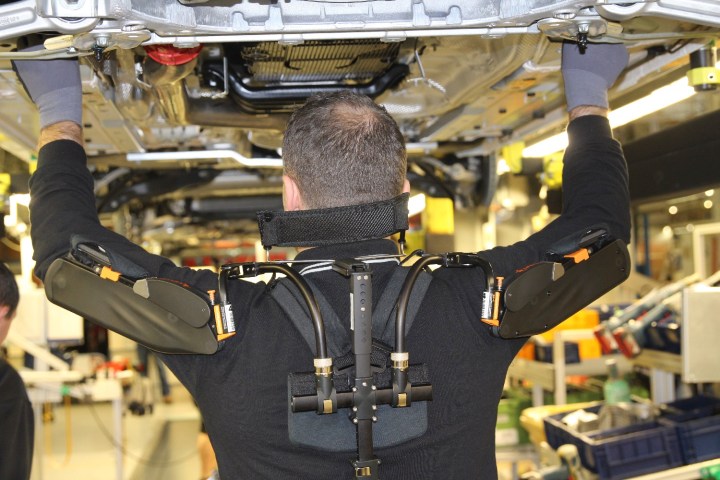
A fire-resistant upper body robotic exoskeleton that’s capable of lowering exertion levels by up to 80 percent when you carry out physically taxing work sounds like the stuff of science fiction. In fact, it’s the basis for a real product recently unveiled by Levitate Technologies. The technology is aimed at giving a handy assist to professionals working in jobs which involve repetitive arm movements, and supports the shoulder, neck, and back of wearers — allowing them to carry out their work for longer, and with reduced risk of injury.
Joseph Zawaideh, vice president of marketing & business development at Levitate, likens it to having a spotter at the gym. “If you ever had to change overhead light bulbs at your home, you realize how quickly your shoulder fatigues and you have to lower your arm to take a break,” he told Digital Trends. “That is the type of application that the Airframe helps with.”
The Airframe consists of a rigid aluminum frame, springs, pulleys, and cables. These kick into action when the user raises his or her arms, and deactivate when the arms are lowered again. The technology is entirely mechanical, with no batteries or tethering required. It was originally invented for surgeons for use in the operating room.
However, Zawaideh said that there was sufficient demand from manufacturing companies for the company to adapt the technology for that market. While upper body exoskeletons have been around for a while, what makes Airframe different from other exosuits is — as its name implies — how lightweight it is. This makes it an ideal piece of equipment for people employed as painters, material handlers, welders, maintenance technicians, construction workers, and fulfillment center packers. The new flame-resistant tech expands those use cases further.
“Welding and grinding are considered ‘hot work,’” Zawaideh continued. “This means there are sparks flying all around the worker, and sometimes landing right on them. Therefore, any clothing or gear worn by the worker must be fire retardant so that it does not catch fire if hit by [them]. This is why welders must wear welding jackets and welding gloves that are fire retardant. In order for the welder or grinder to wear the Airframe, it must be fire retardant just like the welding jacket.”
At present, Levitate’s first-gen Airframe tech is used by customers including Toyota Motor Manufacturing, BMW Manufacturing Company, John Deere, and others. The flame-retardant version will be available to purchase in early 2019.


